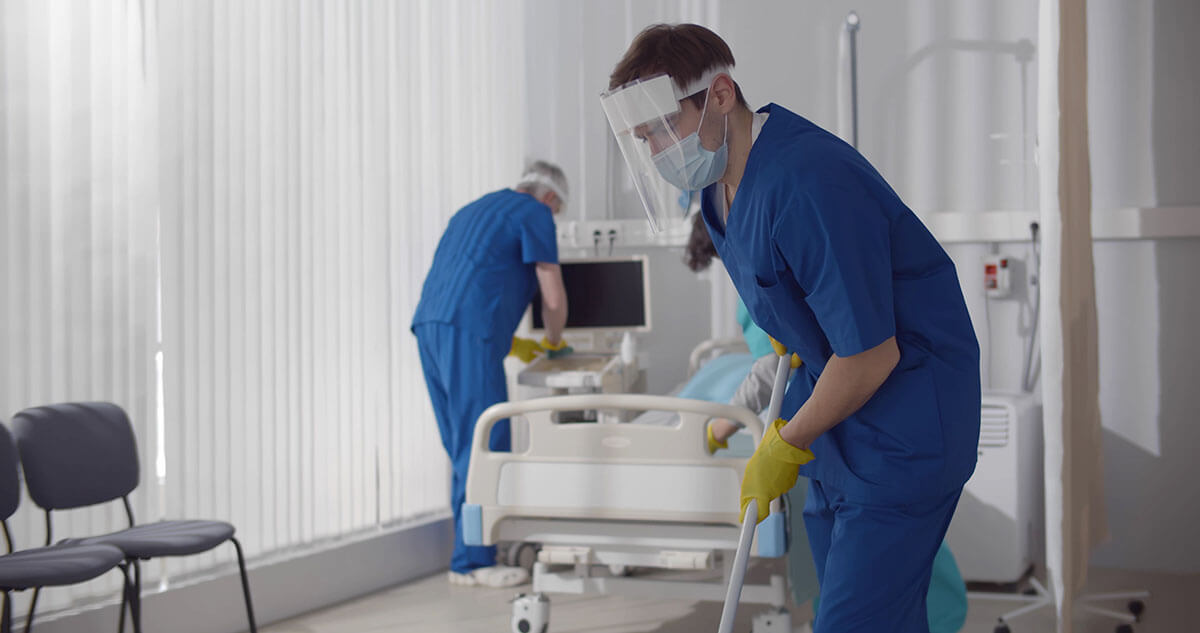Why buying another piece of software is not the answer to your problem
I’m going to stick my neck out here and say whatever the issue you face, your knee-jerk reaction to buy yet another piece of software is not the...
3 min read
 Konnor Baskaran
Feb 9, 2022 2:49:34 PM
Konnor Baskaran
Feb 9, 2022 2:49:34 PM

Since the long-awaited National Standards of Healthcare Cleanliness were published, the mandatory Technical Audit with its new 50 point check has rather stolen the limelight. But the belle of the ball has two ugly sisters, the efficacy audit and the external audit, which are just as crucial to delivering the new standards.
In this article we explain the purpose and process for each audit and why it matters for your trust.
In short, the efficacy audit is designed to measure how you clean, as opposed to what you clean and how frequently. Efficaciousness is determined using evidence-based, scientific methods. This will include:
There are many more metrics to be measured on, and all of these questions are rated on a simple scale, it’s either a 1 or a 0:

While trusts have the freedom to determine audit frequency, patient and visitor-facing areas must be audited for cleaning effectiveness at least once a year. But I’d say once a year is a low bar: your operations will benefit from doing these audits more often, possibly even on a monthly basis.
.png?width=350&name=nhs-cleaning2%20(1).png)
Unfortunately, you can’t only audit your shiniest areas. With one exception, you will need to select areas at random.
That exception is areas specifically targeted for performance review as they have not achieved safe standards consistently, or because they have high rates of infection. For areas that score 80% or less the audit findings should be used to create an improvement plan with support such as further training, investment in new equipment and materials, increased supervision, more resources and changing cleaning times.
As the Standard points out, “Electronic audit systems are useful for highlighting trends and hot spots, as well as greater transparency and more effective sharing of data."
Then there’s the External Audit that involves collaborating with neighbouring facilities (also known as “auditing your mates”). Teaming up is a quick and easy way to find suitably qualified staff to act as auditors, often on a reciprocal basis.
This third-party audit performs a vital role. There are no scores involved: it’s all about the systems you have in place. Are your functional risk areas divided sensibly? Have you got a system to identify low-performing areas and how effective is your remediation process?
Admittedly, this audit is entirely subjective but it’s no less valuable for that. It’s a way of learning from others’ experiences and sharing best practice.
Like the Efficacy Audit, this check is purely advisory but, recognising how powerful a fresh pair of eyes can be, switched-on trusts will perform this independent assessment anyway for the often-eye-opening insights it can reveal.
I’d be remiss not to point out that all three of these audits are enhanced drastically with a digital healthcare management solution. You can turn your audit from a fixed event to a continuous process: cleaners can gather data as they work via a works management app, and send this data straight to the cloud.
Such systems enable managers to see at a glance which areas of the healthcare facility are cleaned well and which not so well by viewing dashboard reports. These comparisons can provide revelations.
For example, if you’re getting a low score for your Technical Audit but a high score for your Efficacy Audit, the mismatch tells you your cleaners are doing their jobs properly but they’re simply stretched too thin. Conversely, if you score highly on your Technical Audit but poorly on the Efficacy Audit, this could mean the cleaners are not doing their jobs well and you’re overstaffed in that space: they’re all doing half a job.
I’ll end by pointing out the obvious. The Standards’ three-audit system has been expressly designed to create a whole greater than the sum of its parts: to give a comprehensive view of all aspects of cleaning performance, from what areas are cleaned to how well they’re cleaned and, lastly, ideas for improvement.
If your trust focuses on the Technical Audit to the exclusion of everything else, you really are missing a trick.
I’m going to stick my neck out here and say whatever the issue you face, your knee-jerk reaction to buy yet another piece of software is not the...
It might sound odd coming from a software company – but changing your processes from paper to digital forms isn’t in and of itself that useful. Yes...

The food service industry has been revolutionized in recent years thanks to facilities management software like ours. Read on to find out how...